15 Iconic American Foods That No One Actually Eats Anymore
Here are 15 iconic American foods that were once staples in diners, kitchens, and school cafeterias—but have since faded into obscurity or fallen out of favor. Whether due to changing tastes, health concerns, or generational shifts, these dishes now feel more nostalgic than current.
1. TV Dinners (on Trays)

Once a beacon of convenience, TV dinners found their way into homes across America in the 1950s. Wrapped in foil with separate sections for meat, vegetables, and dessert, they became synonymous with quick and easy meals. Their popularity waned as more health-conscious and fresh options gained ground.
These pre-packaged meals, often featuring meatloaf or turkey, were a staple for busy families looking for no-fuss dinners. Today, they are more a symbol of mid-century life than a culinary choice.
While TV dinners served their purpose, they now sit in the annals of quirky food history.
2. Jell-O Salad
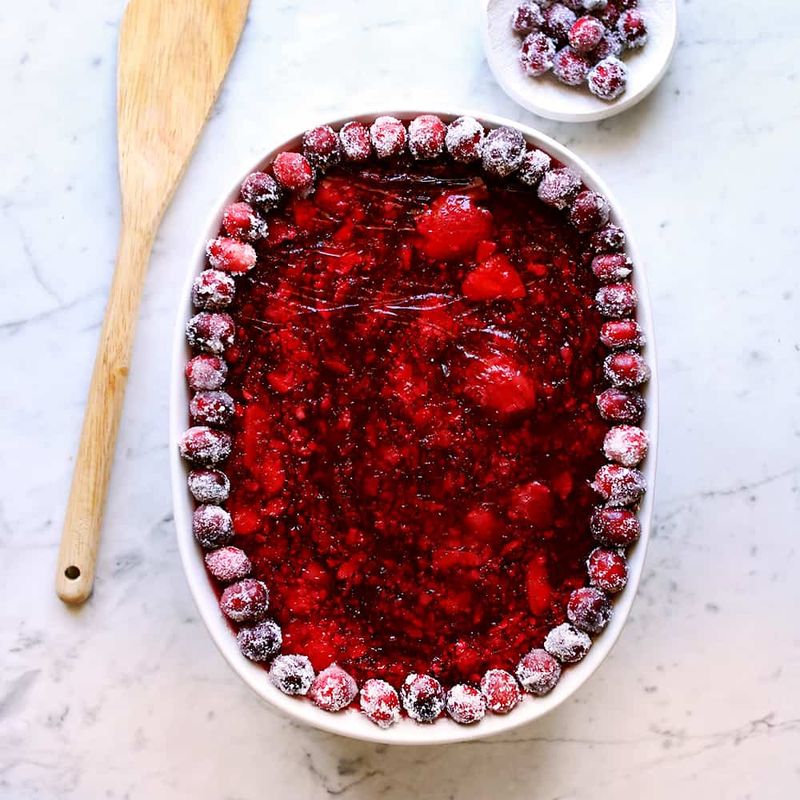
The Jell-O salad was a culinary curiosity of the ’50s and ’60s, combining flavored gelatin with canned fruits and marshmallows. Often, vegetables or even mayonnaise made a surprising appearance, creating a dish both colorful and perplexing.
Seen at potlucks and gatherings, this gelatinous creation captured the era’s experimental spirit. A sign of the times, it reflected both the convenience of packaged foods and the adventurous nature of post-war domestic life.
As tastes evolved, Jell-O salads now remain a quirky memory, rarely gracing modern tables. They stand as a testament to culinary creativity.
3. Aspic
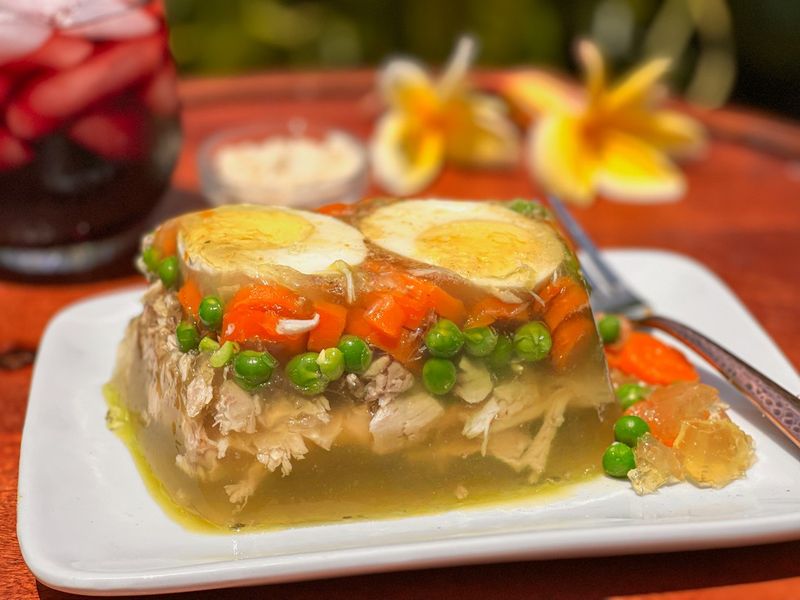
Once considered the height of sophistication, aspic was a gelatin mold made from meat stock, often encasing vegetables or seafood. This elegant dish was a staple at formal gatherings and epitomized culinary refinement.
Aspic’s vivid appearance and unique texture made it a standout, though it baffled many modern palates. Often adorned with intricate designs, it showcased the artistry of mid-century cooking.
Today, aspic is largely absent from menus, seen as more peculiar than palatable. Its legacy endures in cookbooks and vintage culinary imagery, a nod to a bygone era.
4. Ambrosia Salad
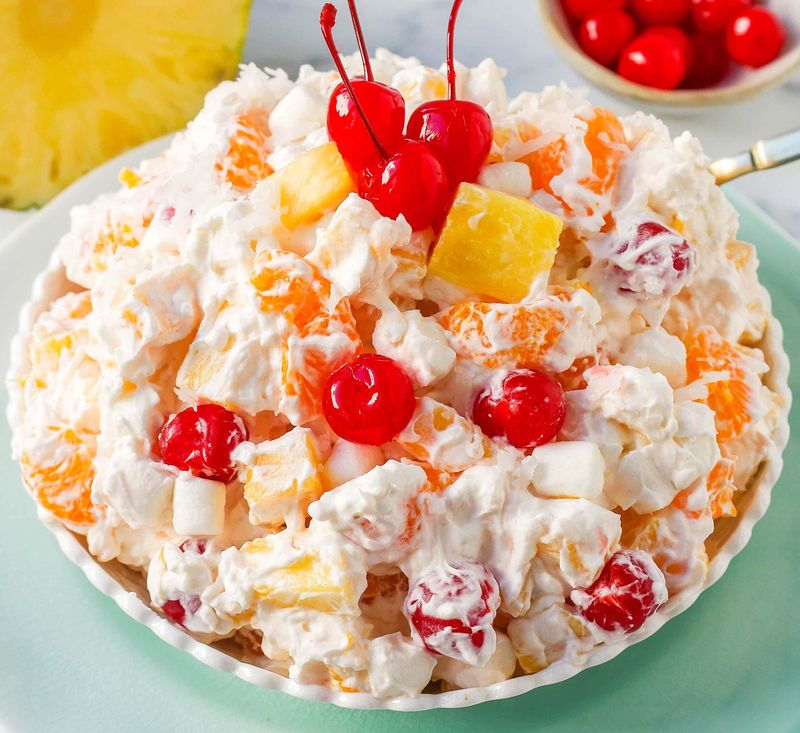
Ambrosia salad, a dish of Southern origin, evoked warmth and hospitality with its blend of whipped topping, mini marshmallows, and canned fruits. Coconut added a tropical flair, making it a family favorite at gatherings.
Despite its sweet allure, changing dietary preferences have moved ambrosia to the background. Once a staple at potlucks, it now appears primarily at retro-themed events, celebrated for its nostalgic charm.
Though it’s rarely a modern menu pick, ambrosia salad continues to remind many of family traditions and simpler times. Its legacy remains through shared stories and memories.
5. Liver and Onions
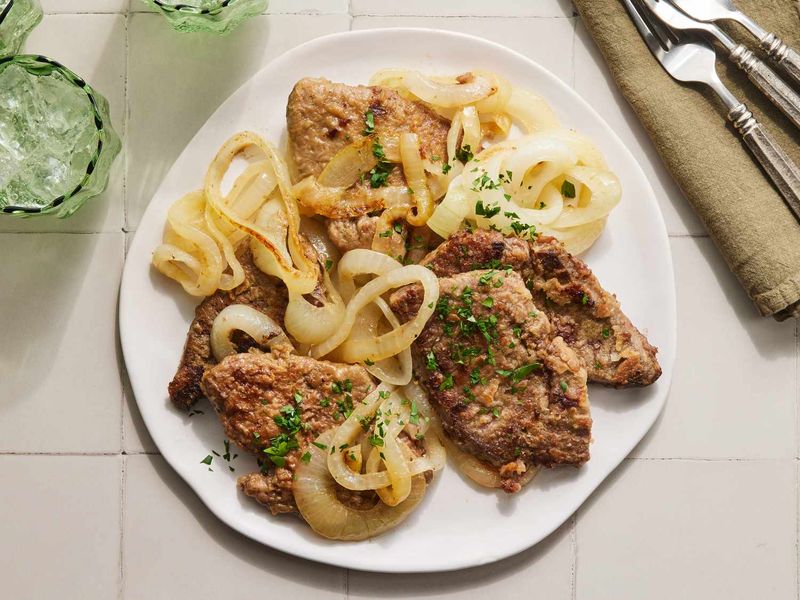
Liver and onions, once a Depression-era dinner mainstay, offered a robust flavor profile that appealed to many in past generations. The dish featured liver cooked with caramelized onions, a hearty meal that provided necessary nutrition.
As culinary tastes evolved, its strong flavor and unusual texture led to its decline in popularity. Many younger diners find it an acquired taste, often opting for milder options.
Though uncommon today, liver and onions hold a place in culinary history as a symbol of resourcefulness and tradition during challenging times. Its legacy is cherished by a few nostalgic cooks.
6. Spam Casseroles

Spam casseroles emerged during wartime as an economical and reliable protein option. This shelf-stable meat was combined with vegetables, pasta, or potatoes to create a filling dish for families.
While Spam remains a pantry staple for some, the casserole form has largely disappeared from modern dinner tables. Health-conscious choices and a preference for fresh ingredients have overshadowed these mid-century creations.
Nevertheless, Spam casseroles are remembered fondly for their role in providing sustenance during lean times. They serve as a symbol of culinary ingenuity and adaptability in the face of scarcity.
7. Corned Beef Hash (Canned Version)

Canned corned beef hash was a breakfast staple, known for its savory blend of corned beef, potatoes, and onions. It was quick to prepare, making it a favorite among busy households.
With the rise of fresh, scratch-made brunch dishes, this canned version has seen a decline in popularity. Many modern diners prefer artisanal or homemade versions that highlight fresh ingredients.
Though it’s now considered old-fashioned, canned corned beef hash remains a nostalgic memory for those who grew up with its comforting presence. It serves as a reminder of simple, satisfying meals from days past.
8. Creamed Chipped Beef on Toast (“SOS”)

Creamed chipped beef on toast, affectionately known as SOS, was a practical meal in military and diner settings. It featured dried beef in a creamy sauce over toast, offering a hearty and quick breakfast.
Despite its practicality, modern tastes have moved away from this dish in favor of more diverse breakfast options. It now holds a place in culinary history as a symbol of no-nonsense dining.
While SOS is seldom seen today, it remains a part of nostalgic food lore, especially among veterans and those who appreciate its down-to-earth appeal. Its legacy endures through shared stories.
9. Tuna Noodle Casserole

Tuna noodle casserole, a comforting blend of canned tuna, egg noodles, and cream of mushroom soup, was a weeknight fixture in many American homes. Its simplicity and convenience made it an ideal choice for busy families.
As culinary trends shifted towards fresher, more complex dishes, this casserole’s popularity waned. Many now view it as a retro dish best suited for nostalgia-themed dinners.
Though less common today, tuna noodle casserole still evokes fond memories for those who grew up with its creamy, satisfying flavors. It remains a cherished part of mid-century American cuisine.
10. Bologna Sandwiches

Bologna sandwiches were once the go-to lunchbox staple, featuring slices of processed bologna nestled between white bread with a smear of mustard. They were simple, affordable, and widely enjoyed.
Over time, preferences have shifted towards fresher, less processed deli options and healthier proteins. This iconic sandwich is now more associated with childhood nostalgia than contemporary dining.
Though its presence in lunchboxes has faded, the bologna sandwich remains a symbol of school days and simpler eating habits. It’s still fondly remembered by many for its straightforward, comforting taste.
11. Sloppy Joes (from a Can)
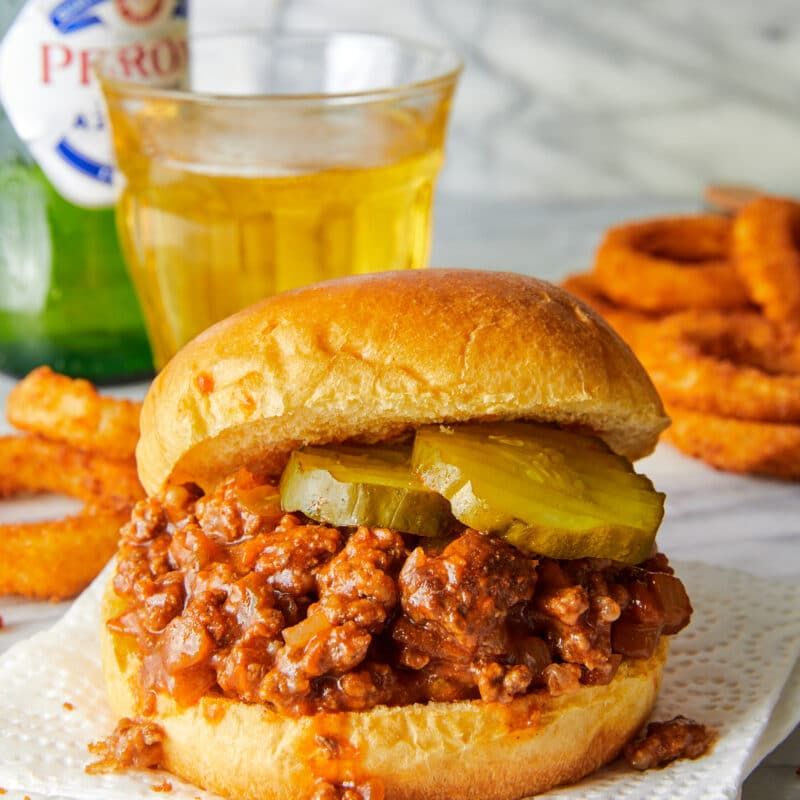
Sloppy Joes from a can, like Manwich, were a convenient way to enjoy this saucy, savory dish. Ground beef mixed with a tangy tomato-based sauce served on a bun made for a quick meal.
Though homemade versions still find their way to the table, the canned variety has largely fallen out of favor. Fresh ingredients and culinary creativity have taken precedence.
The canned Sloppy Joe remains a nostalgic memory, evoking images of fast, casual dinners and family gatherings. It represents an era where convenience often dictated meal choices, yet comfort and flavor were never compromised.
12. Fruitcake
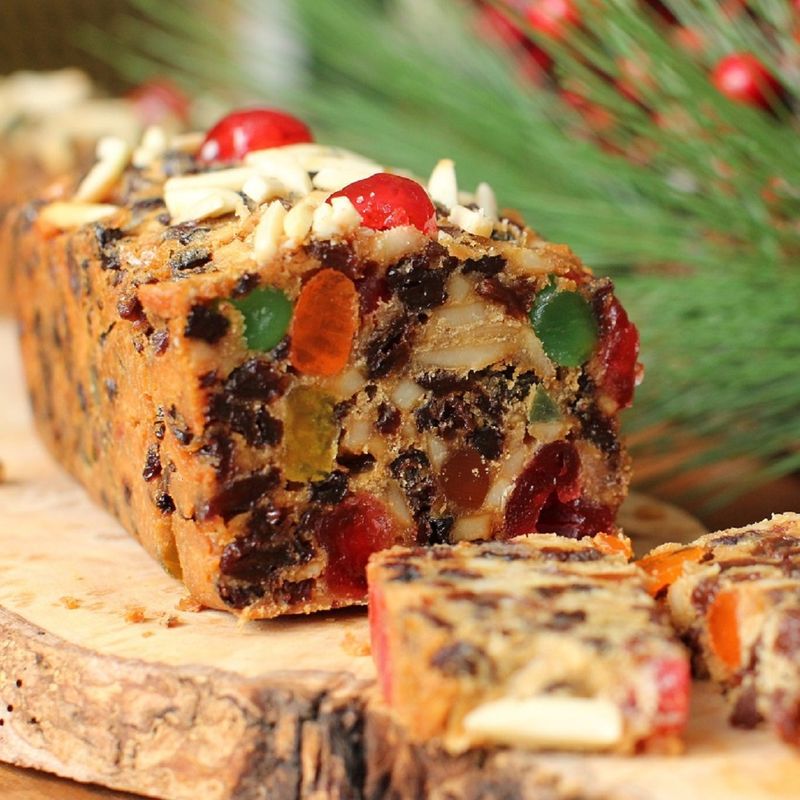
Fruitcake, a dense confection loaded with candied fruits and nuts, has long been a holiday staple, though it’s often the butt of jokes. Its rich, moist texture was traditionally enjoyed during festive celebrations.
While some still appreciate its unique flavor, many now see it as a relic from past traditions. The modern palate often prefers lighter, fresher desserts.
Despite its controversial reputation, fruitcake endures in holiday lore, cherished by some and humorously dismissed by others. It remains a symbol of festive feasting and the varied tastes that come with holiday traditions.
13. Canned Pineapple Upside-Down Cake

Canned pineapple upside-down cake was once the star of the dessert table, with its glossy pineapple rings and vibrant cherries. It was a showcase of sweetness and visual appeal.
However, as baking trends embraced more natural ingredients and complex flavors, this sugary classic became less common. Today, it’s seen as a nostalgic throwback rather than a modern dessert choice.
Even so, the pineapple upside-down cake holds a special place in dessert history. Its allure lies in the simplicity and charm of mid-century baking, reminding many of family gatherings and shared treats.
14. Grapenut Pudding

Grapenut pudding, once a popular New England dessert, combined cereal, milk, and eggs into a creamy, comforting treat. Its unique texture and subtle sweetness made it a regional favorite.
Though few outside vintage diners and local gatherings have heard of it today, those who remember it often speak fondly of its wholesome taste. Modern dessert trends have overshadowed this old-fashioned delight.
Still, Grapenut pudding is a cherished part of New England’s culinary heritage. It represents a time when simple ingredients came together to create satisfying, heartwarming dishes, leaving a lasting impression in regional cuisine.
15. Cracker Barrel Cheese Logs and Cheese Balls

Cracker Barrel cheese logs and cheese balls were a holiday party staple, served with a variety of crackers. Their rich, processed cheese flavor was a hit in the ’70s and ’80s.
Though once at the center of festive spreads, these cheesy delights are now more likely seen as kitschy throwbacks. Contemporary tastes lean towards artisanal and gourmet cheese options.
Despite their decline in popularity, these cheese logs and balls are fondly remembered for their role in holiday celebrations. They symbolize a time of culinary simplicity and the joy of gathering with loved ones.
